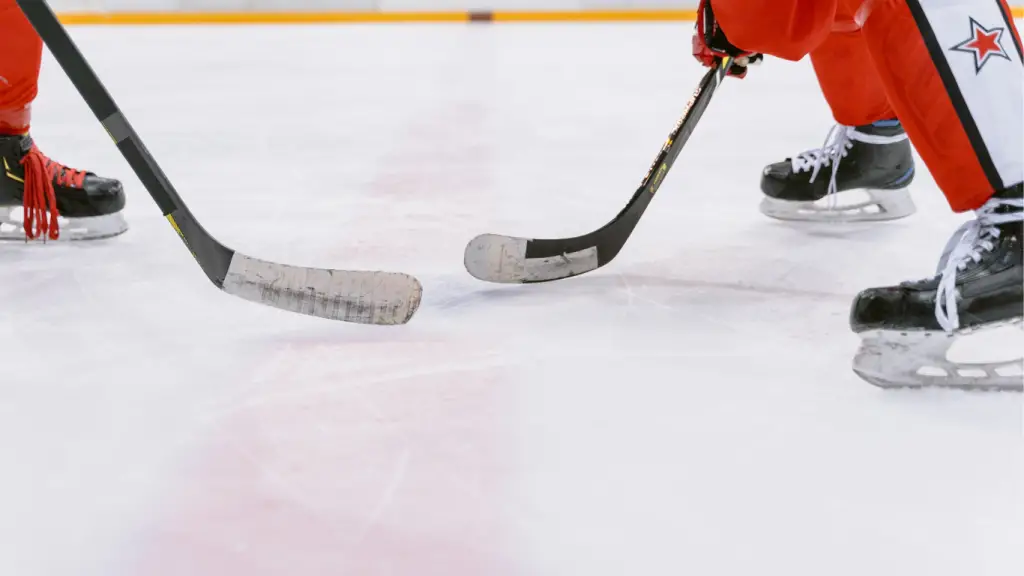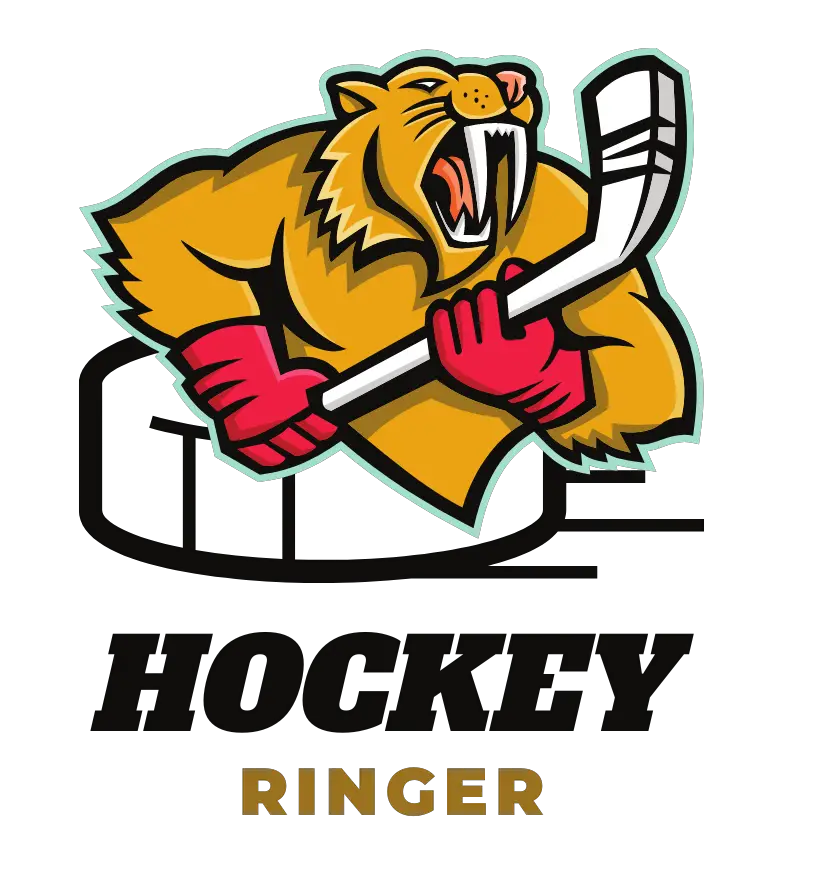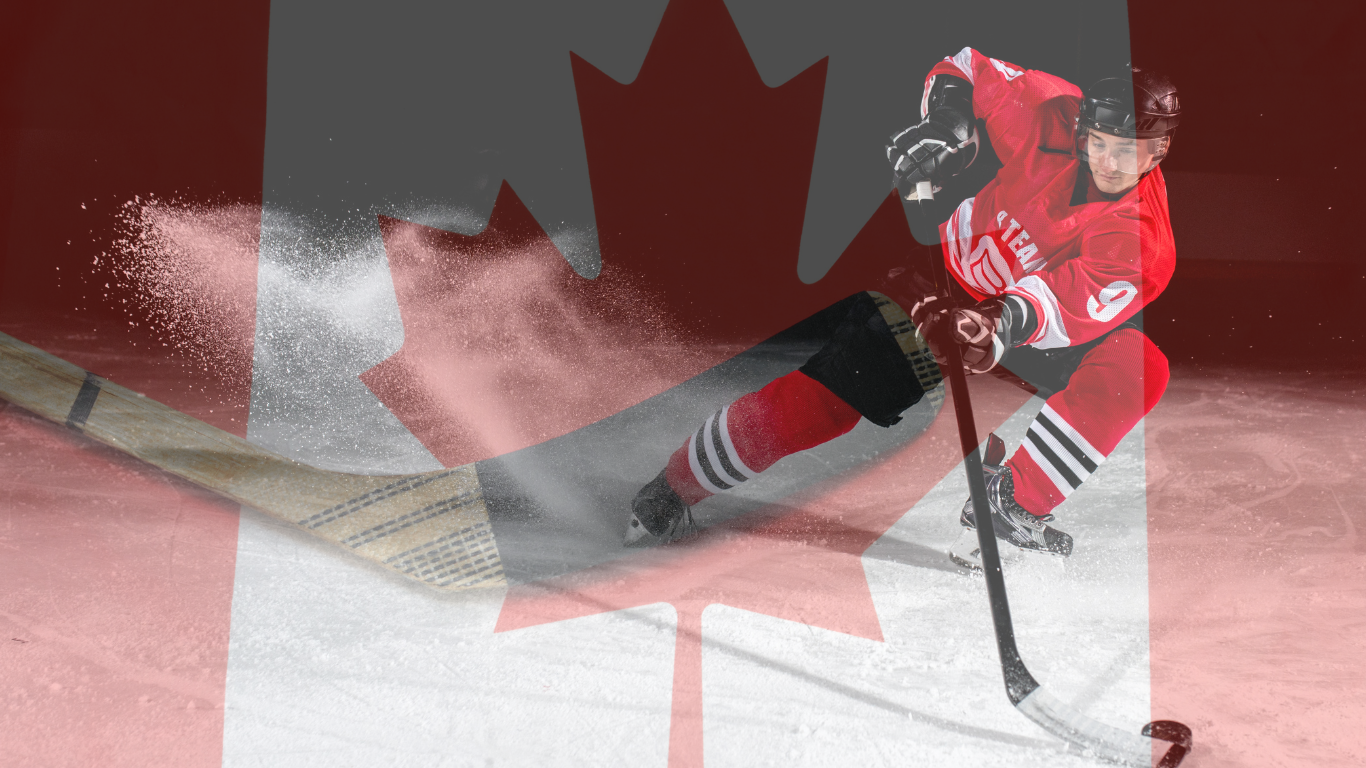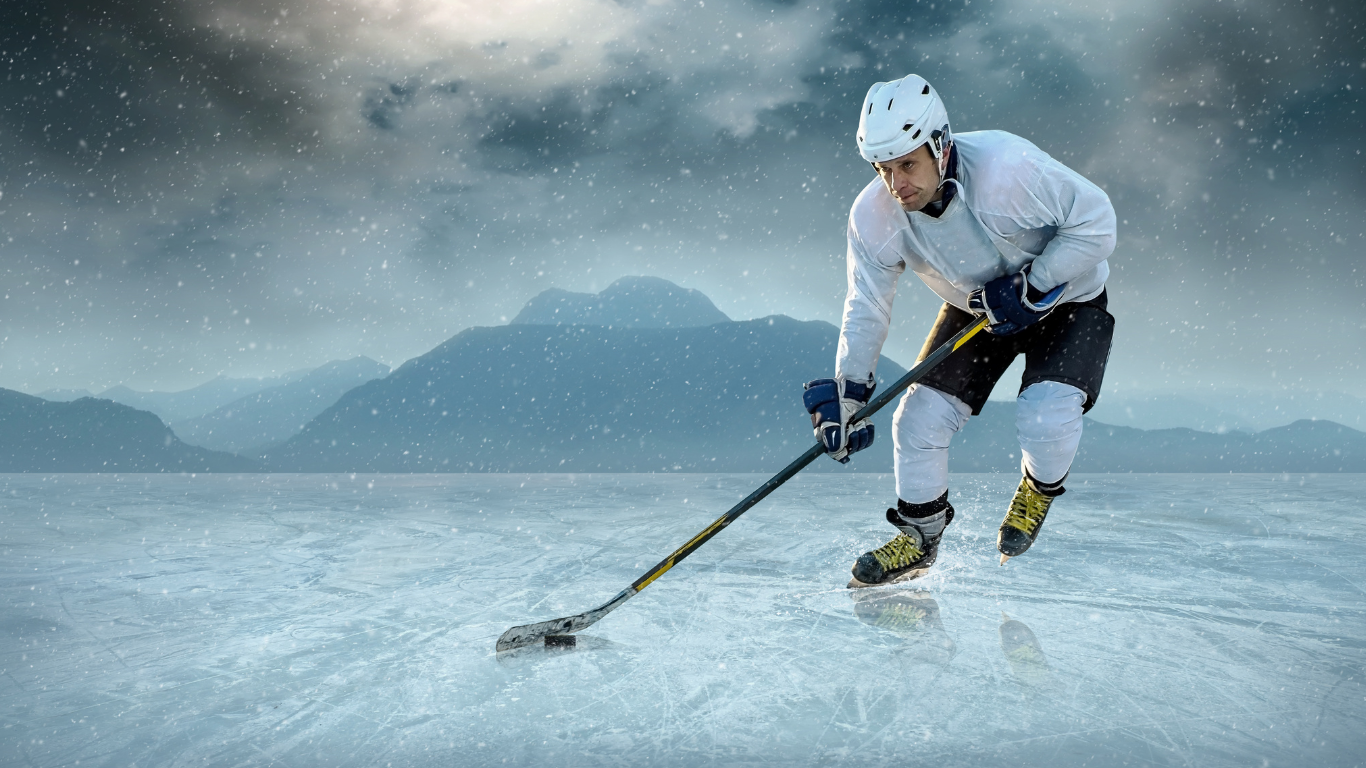Mastering the art of skating backward in ice hockey begins with adopting a robust hockey stance: Ensure your knees are bent, your back remains straight, and your gaze is forward, with your weight resting on the balls of your feet. Initiating the movement involves a strong push-off using one foot while the other aids in balancing. As you glide smoothly on the ice, maintain a slight knee bend and keep your weight centered.
Boost your balance and speed by implementing c-cuts: pushing one foot out to the side before pulling it back, alternating feet in succession. Mastering turns a weight shift towards the foot, guiding the turn, using the opposite foot to push off. As with all techniques, regular practice is vital; initial instability is natural, but perseverance pays off.
Basics of Ice Hockey Skating

Ice hockey is a fast-paced and exciting sport that requires players to have excellent skating skills. Skating backwards is an essential skill that every ice hockey player needs to learn. In this section, we will discuss the basics of ice hockey skating.
Body Position
The first thing you need to understand when learning to skate backwards is body position. Your body should be square to the ice with your knees bent, and your weight should be on the balls of your feet. Your shoulders should be back, and your head should be up.
Crossover Steps
Crossover steps are the foundation of skating backwards. To perform a crossover step, you need to cross one foot over the other and push off with the back foot. This motion allows you to move backward quickly and efficiently.
Edges
Edges are another essential aspect of skating backwards. You need to be able to balance on the inside and outside edges of your skates. This skill allows you to turn and change direction quickly.
Practice
Like any skill, skating backwards takes practice. Start by practicing your body position and crossover steps. Once you are comfortable with those, move on to practicing your edges. The more you practice, the more comfortable you will become skating backwards.
In conclusion, skating backwards is an essential skill for any ice hockey player. Understanding body position, crossover steps, and edges are the basics of ice hockey skating. With practice and dedication, anyone can learn to skate backwards proficiently.
The Importance of Balance and Posture
Maintaining proper balance and posture is crucial when learning how to skate backwards in ice hockey. Without it, you risk losing control and falling, which can lead to injuries and setbacks in your progress.
To achieve good balance, keep your knees slightly bent and your weight evenly distributed over both feet. This will help you maintain stability and control as you move backwards. Your head should be up, and your eyes should be focused on where you are going, not on your feet.
Posture is also important. Keep your back straight and your shoulders relaxed. Avoid leaning too far forward or backward, as this can throw off your balance and make it harder to control your movements. Your arms should be slightly bent and held out to the sides for balance.
To help you maintain proper balance and posture, try these tips:
- Keep your core engaged: Tighten your abdominal muscles to help stabilize your body and maintain good posture.
- Practice on one foot: This will help you develop better balance and control over your movements.
- Use your edges: Learn to shift your weight onto the inside and outside edges of your skates to help you turn and change directions smoothly.
By focusing on your balance and posture, you will be able to skate backwards with more confidence and control, and progress more quickly in your ice hockey skills.
The Role of the Lower Body in Skating Backwards
Skating backwards in ice hockey requires a different technique and muscle engagement than skating forwards. The lower body plays a crucial role in this process, as it provides the power and stability needed to execute the movement.
When skating backwards, the legs should be shoulder-width apart, with the knees bent and the weight evenly distributed on both feet. The hips should be slightly rotated to allow for a wider range of motion. The lower body muscles used in skating backwards include the glutes, quadriceps, hamstrings, and calves.
The glutes, or butt muscles, are the largest and strongest muscles in the lower body. They are responsible for providing the power needed to push off and maintain speed when skating backwards. The quadriceps, located in the front of the thigh, help to extend the knee and provide additional power when pushing off.
The hamstrings, located in the back of the thigh, work in conjunction with the glutes to provide stability and balance when skating backwards. They also help to control the speed of the movement. The calves, located in the back of the lower leg, are responsible for pointing and flexing the foot, which is important for maintaining balance and control.
In addition to these muscles, proper technique and body positioning are also important when skating backwards. It is important to keep the chest up and the shoulders back, as this helps to maintain balance and control. The arms should be held out to the sides for balance, with the elbows slightly bent.
Overall, the lower body plays a crucial role in skating backwards in ice hockey. By engaging the proper muscles and maintaining proper technique, players can execute the movement with power, speed, and control.
The Role of the Upper Body in Skating Backwards
When it comes to skating backwards in ice hockey, the upper body plays a crucial role in maintaining balance and generating power. In this section, we’ll take a closer look at the specific ways in which the upper body contributes to backwards skating.
Firstly, it’s important to note that the upper body should remain relatively still and stable while skating backwards. This means keeping the arms and shoulders relaxed and close to the body, with the elbows bent at a 90-degree angle. The head should be up and facing forward, with the chin tucked slightly towards the chest.
In terms of generating power, the upper body can be used to initiate the backwards skating motion. This is done by leaning slightly forward and pushing off with the toes of the back foot, while simultaneously pulling the front foot backwards. As the skater gains momentum, the upper body can be used to maintain balance and control by shifting weight from side to side as needed.
Overall, the upper body plays an important role in backwards skating by providing stability, power, and control. By keeping the upper body relaxed and using it to initiate and maintain the backwards skating motion, skaters can improve their overall performance on the ice.
Mastering the C-Cut
To skate backwards in ice hockey, one of the most essential techniques to master is the C-Cut. The C-Cut is a fundamental move that involves using your edges to push yourself backwards and change direction while maintaining speed. Here are some tips to help you master the C-Cut:
- Start by standing with your feet shoulder-width apart and your knees slightly bent. Keep your weight on the balls of your feet, and your arms out in front of you for balance.
- Lift one foot off the ice and turn it so that the inside edge of your skate is facing the other foot. Your other foot should remain flat on the ice.
- Push off with the inside edge of your lifted foot, making a “C” shape with your skate. As you do this, shift your weight to your other foot and turn it so that the inside edge is now facing the lifted foot.
- Repeat this motion, alternating between your left and right foot, to move backwards while maintaining your speed.
- Practice this technique slowly at first, focusing on your form and balance. As you become more comfortable with the motion, gradually increase your speed.
Remember, mastering the C-Cut takes practice and patience. Take your time and focus on your technique, and you’ll soon be skating backwards with ease.
Mastering the Backward Swizzle
To skate backward in ice hockey, you need to master the backward swizzle. This is a fundamental skill that every hockey player should learn. The backward swizzle is a way to move backward while maintaining control and balance.
To perform the backward swizzle, follow these steps:
- Start by standing with your feet shoulder-width apart and your knees slightly bent.
- Shift your weight to one foot and lift the other foot off the ice.
- Place the lifted foot behind the other foot and touch the ice with the toe of the blade.
- Push off with the toe of the blade to create a “C” shape on the ice.
- Bring the lifted foot back to its original position and repeat the process with the other foot.
As you get comfortable with the backward swizzle, try to increase your speed and the size of the “C” shape. This will help you move faster and make tighter turns.
Remember to keep your knees bent, your head up, and your arms out for balance. Practice the backward swizzle until you can do it smoothly and confidently.
In summary, the backward swizzle is a crucial skill for skating backward in ice hockey. With practice and dedication, you can master this skill and become a better hockey player.
Transitioning from Forward to Backward Skating
Transitioning from forward to backward skating is a fundamental skill in ice hockey. It enables players to quickly switch from an offensive to a defensive position and vice versa. Here are a few tips to help you master this skill:
- Start by practicing your backward crossovers. This will help you get comfortable with the motion of crossing your feet over each other while skating backward.
- As you approach the transition point, shift your weight to your back foot and turn your head to look over your shoulder in the direction you want to skate.
- Use your inside edge to make a sharp turn and cross your feet over each other to start skating backward.
- Keep your knees bent and your weight centered over your feet to maintain balance and control.
- Practice transitioning from forward to backward skating at different speeds and from different angles on the ice to improve your overall skill.
Remember, mastering the transition from forward to backward skating takes practice and patience. Keep at it, and you’ll be skating backward like a pro in no time!
Common Mistakes and How to Avoid Them
When learning to skate backwards in ice hockey, there are some common mistakes that many beginners make. Here are a few tips on how to avoid them:
- Looking down: One of the most common mistakes is looking down at your feet while skating backwards. This can cause you to lose your balance and fall. Instead, keep your head up and look straight ahead.
- Not bending your knees: Another mistake is not bending your knees enough. This can make it difficult to shift your weight and change direction. Make sure to keep your knees bent and your weight centered over your skates.
- Using your toe picks: Using your toe picks to push off can be a useful skill, but it’s important not to rely on them too much. This can cause you to lose your balance and fall. Instead, practice pushing off with the sides of your blades.
- Leaning too far back: Leaning too far back can cause you to lose your balance and fall. Instead, keep your weight centered over your skates and your shoulders over your toes.
- Not practicing enough: Finally, one of the biggest mistakes is not practicing enough. Skating backwards takes time and practice to master. Make sure to practice regularly and don’t get discouraged if you don’t get it right away.
By avoiding these common mistakes and practicing regularly, you can improve your skating skills and become a more confident and effective player on the ice.
Practicing Backward Skating Drills
Practicing backward skating drills is an essential part of learning how to skate backward in ice hockey. These drills can help you develop the necessary skills and techniques to maneuver on the ice with ease and confidence. Here are a few drills you can practice to improve your backward skating abilities:
- Backward C-Cuts: Start by standing still on one foot and then shift your weight onto the other foot. Begin to move backward by pushing off with the foot you shifted your weight onto, and then use the other foot to make a C-cut. Repeat this motion with the other foot, alternating between the two feet as you move backward.
- Backward Swizzles: Start by standing still and then shift your weight onto one foot. Push off with the other foot and then bring it back in towards your other foot. As you do this, shift your weight onto the foot you just brought back in and then repeat the motion with the other foot.
- Backward Cross-Overs: Begin by skating forward and then transition into backward skating. Cross one foot over the other as you move backward, and then use the other foot to push off and cross over again.
- Backward Figure-Eights: Start by skating backward in a straight line and then make a wide turn to the right. As you complete the turn, cross one foot over the other and then continue skating backward in a straight line. Then, make a wide turn to the left and repeat the motion with the other foot.
Practicing these drills regularly can help you improve your backward skating abilities and become a more confident and skilled ice hockey player. Remember to focus on proper technique and form, and don’t be afraid to ask for feedback or guidance from a coach or experienced player.
Safety Measures When Skating Backwards
Skating backwards can be challenging, especially for beginners. It is important to take safety measures to prevent injuries while practicing this skill. Here are some tips to keep in mind:
- Wear proper protective gear, including a helmet, mouthguard, elbow and knee pads, and gloves. This will help prevent injuries in case of falls or collisions.
- Always look behind you before skating backwards to avoid colliding with other players or obstacles on the ice.
- Keep your knees slightly bent and your weight centered over your feet. This will help you maintain balance and control while skating backwards.
- Use your arms and upper body to help maintain balance and control. Keep your arms out to the sides and use them to help steer and turn.
- Practice skating backwards in a safe and controlled environment, such as an empty area of the rink or during a practice session with a coach or experienced player.
By following these safety measures, you can reduce the risk of injuries while practicing skating backwards in ice hockey. Remember to always prioritize safety and take your time when learning new skills on the ice.
Advanced Techniques for Backward Skating
To further improve your backward skating skills in ice hockey, there are several advanced techniques you can try. These techniques require a lot of practice and patience, but they can greatly enhance your performance on the ice.
Crossovers
Crossovers are an essential skill for backward skating. This technique involves crossing one foot over the other while skating backward. It allows you to maintain speed and change direction quickly. To perform crossovers, start by skating backward with your knees bent and your weight on the balls of your feet. Then, lift one foot and cross it over the other foot, placing it on the ice behind the other foot. Push off with your crossed-over foot and repeat the process with the other foot.
Mohawk Turns
Mohawk turns are another advanced technique for backward skating. This technique involves shifting your weight from one foot to the other while turning. It allows you to change direction quickly and maintain your speed. To perform a Mohawk turn, start by skating backward with your knees bent and your weight on the balls of your feet. Then, shift your weight onto one foot and turn your other foot so that it is facing the direction you want to go. Finally, push off with your turned foot and repeat the process with the other foot.
Backward Crossovers
Backward crossovers are similar to forward crossovers, but they are performed while skating backward. This technique allows you to maintain your speed and change direction quickly. To perform backward crossovers, start by skating backward with your knees bent and your weight on the balls of your feet. Then, lift one foot and cross it over the other foot, placing it on the ice behind the other foot. Push off with your crossed-over foot and repeat the process with the other foot.
Backward Stops
Backward stops are an important technique for backward skating. This technique allows you to come to a quick stop while skating backward. To perform a backward stop, start by skating backward with your knees bent and your weight on the balls of your feet. Then, turn your toes inward and dig the inside edge of your skates into the ice, creating friction that will slow you down. Finally, shift your weight forward and come to a complete stop.
In conclusion, mastering these advanced techniques for backward skating can greatly improve your performance on the ice. Remember to practice these techniques regularly and be patient with yourself as you develop your skills.
Frequently Asked Questions
What are some tips for improving your backward skating in ice hockey?
Improving your backward skating in ice hockey requires a lot of practice and patience. Here are some tips that can help you:
- Keep your knees bent and your weight centered over your feet.
- Use your edges to control your speed and direction.
- Keep your head up and your eyes forward.
- Use your arms to help with balance and stability.
How can you increase your speed while skating backwards in ice hockey?
To increase your speed while skating backwards in ice hockey, you need to focus on your technique. Here are some tips:
- Use your edges to push off and generate power.
- Keep your knees bent and your weight centered over your feet.
- Use your arms to help with balance and stability.
- Practice skating backwards as much as possible.
What are some common mistakes to avoid when skating backwards in ice hockey?
Skating backwards in ice hockey can be challenging, and there are some common mistakes that you should avoid. Here are a few:
- Leaning too far forward or backward.
- Not keeping your knees bent.
- Not looking where you’re going.
- Not using your edges to control your speed and direction.
How do you perform crossovers while skating backwards in ice hockey?
Performing crossovers while skating backwards in ice hockey requires a lot of skill and practice. Here are the steps:
- Start skating backwards.
- Cross your outside foot over your inside foot.
- Push off with your inside foot and bring your outside foot back to its original position.
- Repeat on the other side.
What are some drills to improve your backward skating in ice hockey?
There are many drills that can help you improve your backward skating in ice hockey. Here are a few:
- Backward crossovers around the circles.
- Backward skating with one foot.
- Backward skating with the puck.
- Backward sprints.
How do you transition from skating forward to skating backwards in ice hockey?
Transitioning from skating forward to skating backwards in ice hockey is an important skill. Here are the steps:
- Skate forward.
- Pivot on one foot and turn your body 180 degrees.
- Start skating backwards.




Leave a Reply